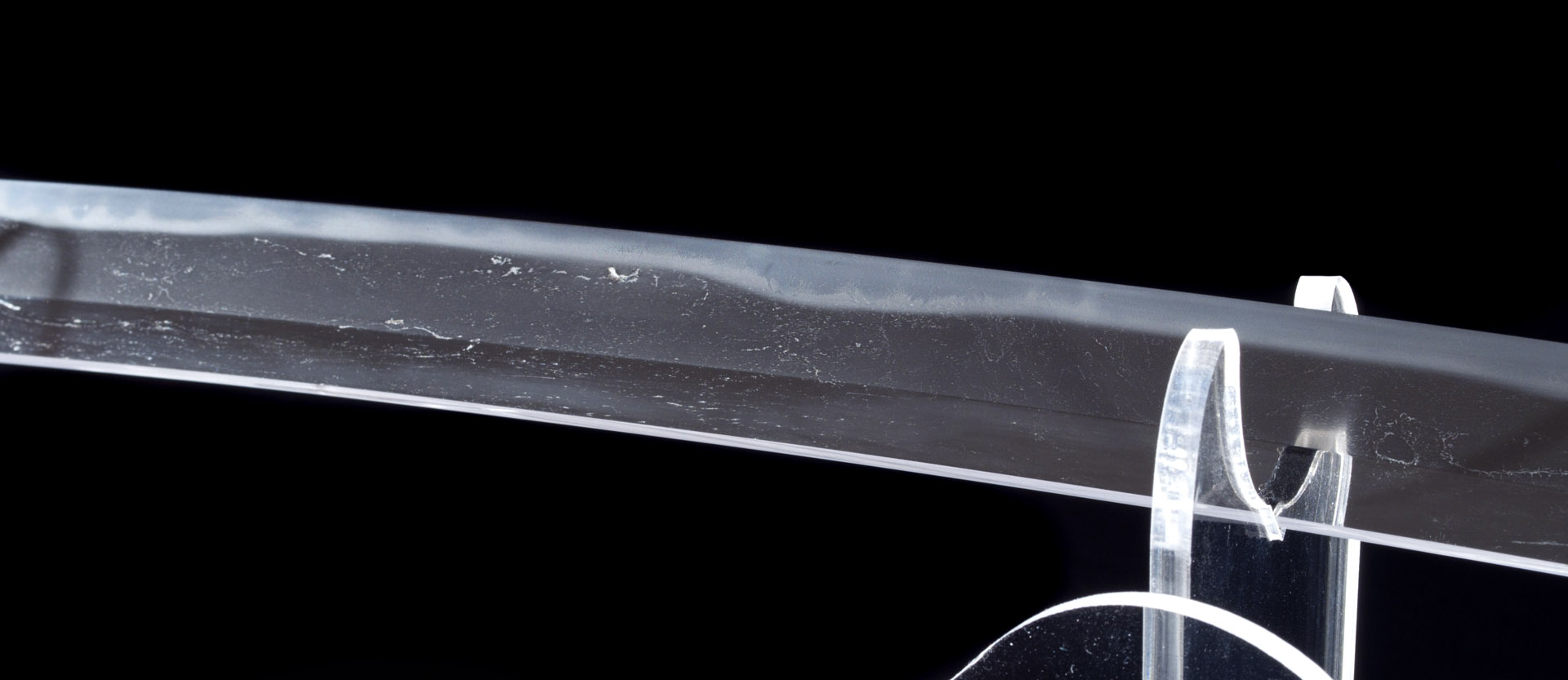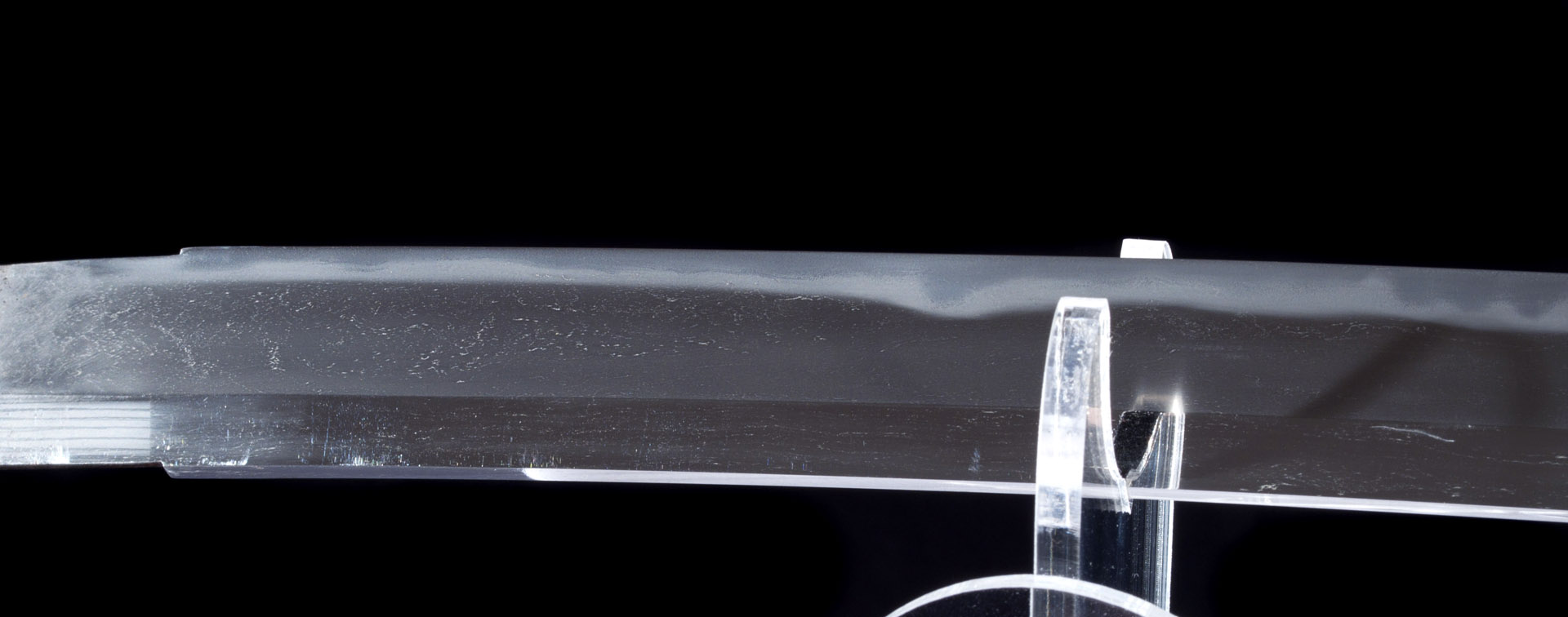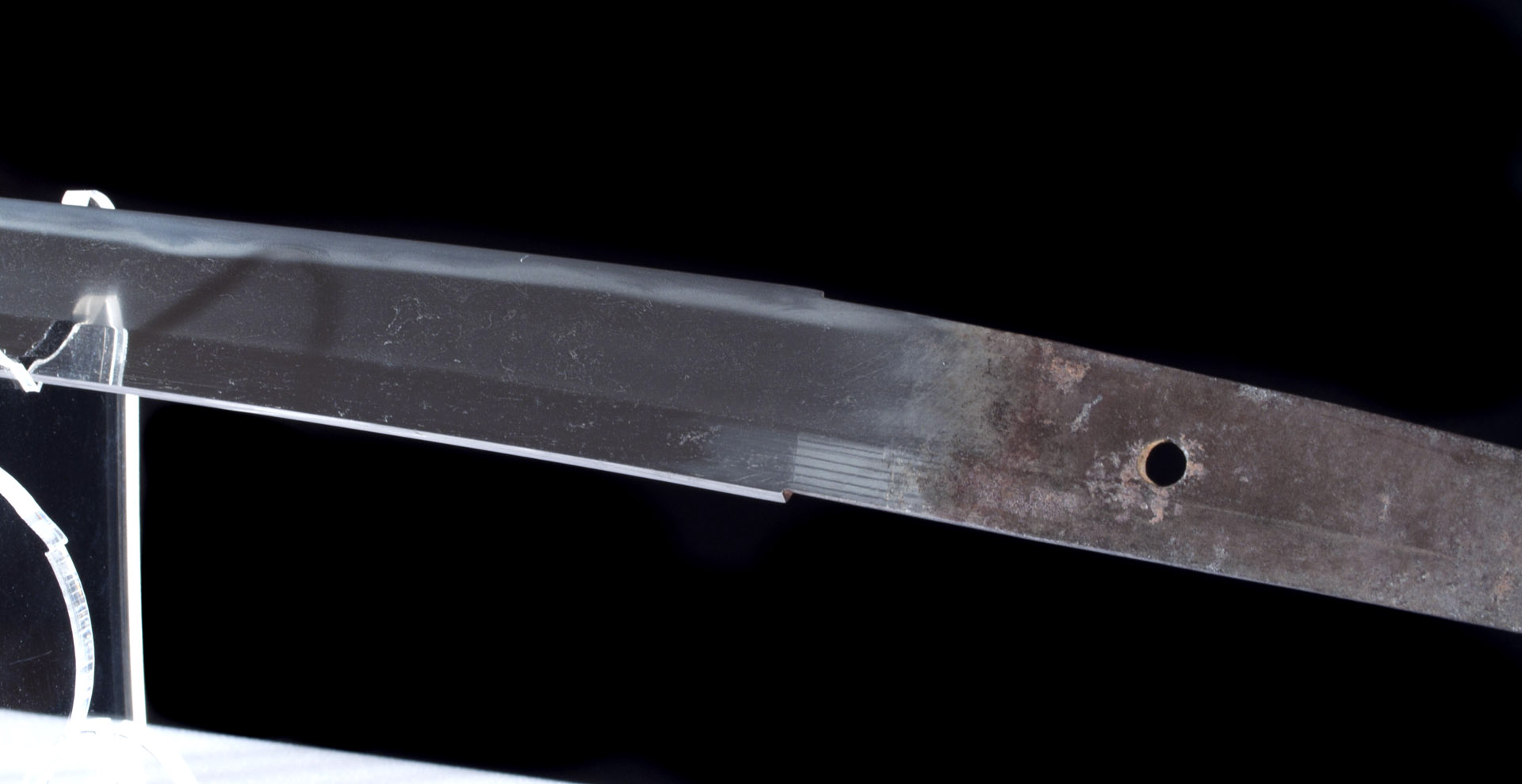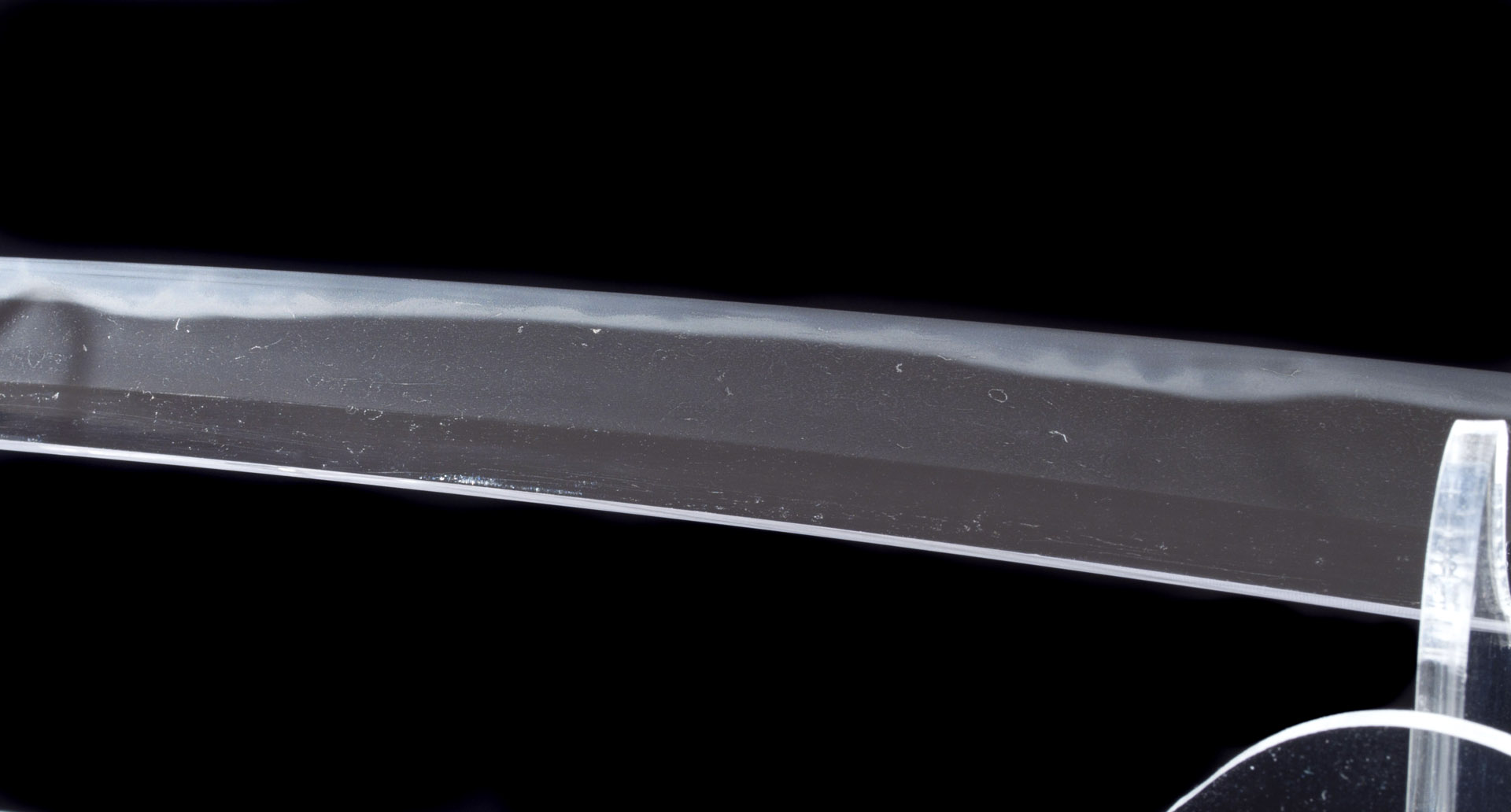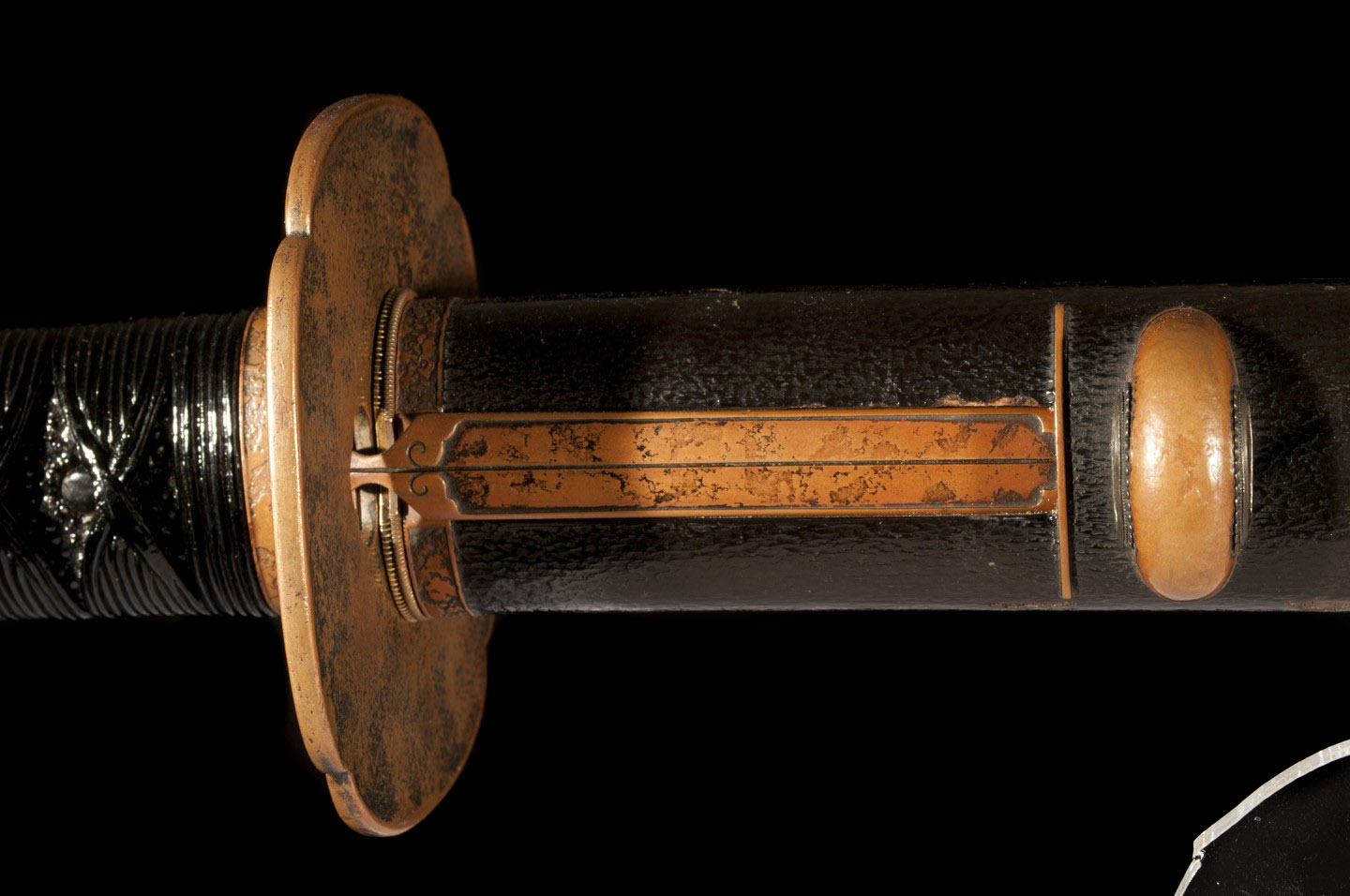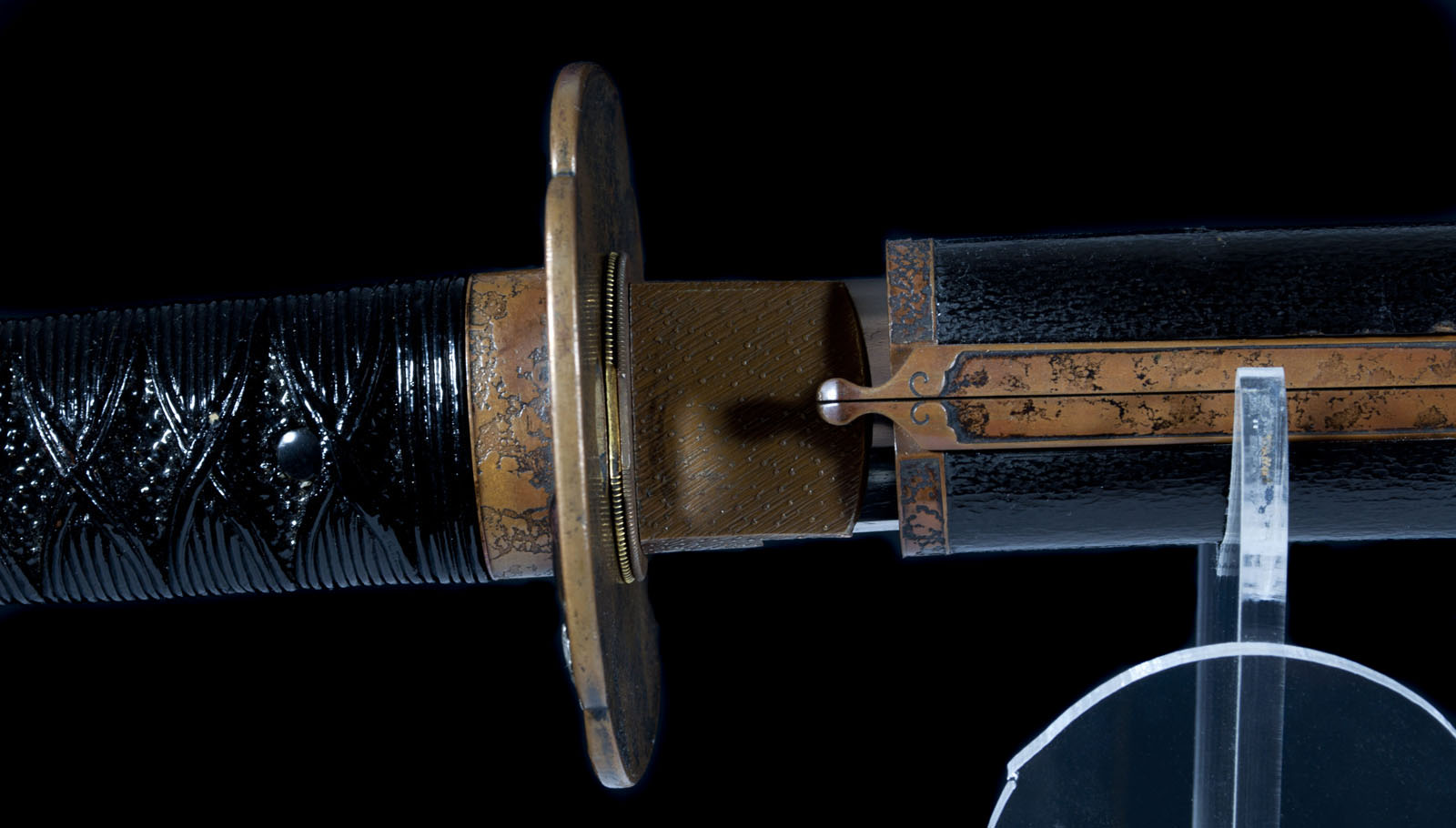Rare Koto Katana attributed to Sengo school of the Ise province. 千子
Complete and following mount.
Mumei Suriage blade attributed to Sengo school by a NBTHK Hozon certificate.
This one is a bit tired due to several successive polishing but all features are present and even admirable.
Itame Jihada, Hamon in Nioi deki Notare with an almost perfect symmetry on both sides Omote and Ura, peculiarity of this school, especially the generations of Muramasa.
In my opinion an excellent opportunity to acquire a blade having a great chance to come from one of three generations of Muramasa…
Production period officially assumed : Late Muromachi (1501- 1573) – Ise
« Officially » because Sengo school is one of the most mysterious schools in the history of Nihonto. We know very little and there are many different opinions about the period of production of the blades of the founder of this school, Muramasa. Some ancient texts speak of 1362-1368 for the first generation, other 1429-1444, but it is commonly accepted that this production begins in 1501, simply because this date is the oldest found on a blade signed and dated Muramasa.
Muramasa was named Uemonnojô, he also was the Buddhist name Myôdai.
This legendary blacksmith, scourge of the famous clan of Tokugawa, is perhaps one of the most famous blacksmiths but also one of the most controversial in the history of Japan.
It is mainly famous for its blades called « demonic, » but he was above all a talented blacksmith able to create high quality blades.
Some old Japanese books recount the fact that there was a first in Teiji Muramasa (1362) and he was a pupil of the great Masamune.
Masamune and Muramasa God and Lucifer … Such is his reputation in Japan for hundreds of years and still follows today.
There are indeed many theories about his history and life.
Among the most likely, there was one that said he was a student of Heianjo Nagayoshi. You should know that the most influential smiths on the time of swords styles are Muramasa, and Shimada Nagayoshi Yoshisuke. These three blacksmiths represents the « Bungi trio » which takes place the first place to the direction that will take the Japanese sword between other influences Sengoku to the Muromachi period.
He was probably productive for a period of 50 years through Bungi, Eisho, Daiei and Tenmon.
Some experts say that there were two or three generations during this period but that hasn’t yet been proven.
He made principally many Tanto, sun-nobi Tanto and Katana.
His Hamon are often symmetrical between the two sides, it is also one of its characteristics.
The legend was created when Tokugawa Ieyasu became Shogun in 1603.
It started with the death of his eldest son Nobuyasu. The latter was accused of treason and was forced to commit suicide by seppuku (ritual suicide). The blade used to end his days was a Wakizashi signed Muramasa.
This misfortune, added to the fact that his grandfather, his father and himself was also seriously injured by blades forged by Muramasa, was the trigger point that begat this exacerbated paranoia towards this blacksmith.
Ieyasu who considered now Sengo Muramasa blades as cursed, so had them simply banned and severely punish anyone who had allegedly caught in possession of one of its blades.
This of course leads to the fact that there were many signatures have been erased or even modified in order to avoid these penalties.
On the other hand, some opponents of the Tokugawa family were taken at this time of great excitement for Muramasa blades and were willing to spend a fortune to be able to acquire one of them.
Even long after the death of Ieyasu, Tokugawa family continued to punish the possession of a Muramasa blade by Seppuku …
At the end of the 17th century, this story had ended up creating superstitions among the Japanese population. Some thought that a Muramasa blade could bring good luck or bad luck, happiness or death. Others said that Muramasa blades were bloodthirsty, and its owner found himself endowed with this trait when it seized in …
Even today, the name of Muramasa is found in novels, Kabuki plays, Manga, games, movies …
Dimensions :
Nagasa = 66 cm
Motohaba = 3,1 cm
Kasane = 0,52 cm
Sold


